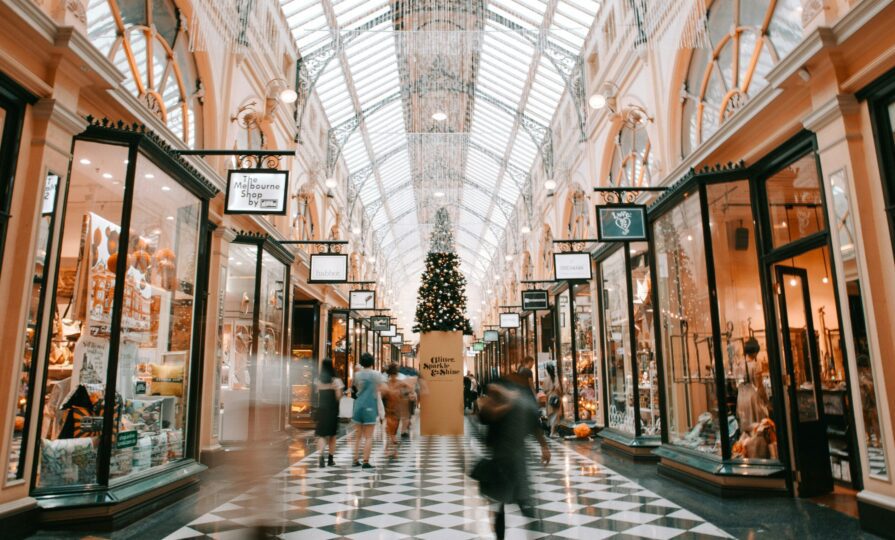How China and ‘memory makers’ are shaping luxury retail trends
Key drivers of recovery have included Chinese demand, fueled by pandemic savings, and stabilised US and European consumption trends

The global luxury retail market is at a turning point, navigating economic shifts, evolving consumer preferences, and new growth opportunities. Insights from Morningstar’s Luxury Landscape and other industry reports have explained what trends really shaped the luxury segment year, giving us a good idea of what to expect in 2025.
The luxury industry consistently rebounds strongly from downturns, typically within one to two years. Jelena Sokolova, senior equity analyst at Morningstar, said: “We’re currently in the first year of a downcycle, yet significant opportunities remain.”
Key drivers of recovery have included Chinese demand, fueled by pandemic savings and rising high-wage employment, and stabilised US and European consumption trends as post-pandemic spending leveled off.
China’s importance to the luxury market is undeniable, with the Asia-Pacific region contributing nearly 30% of LVMH’s revenue. However, sluggish GDP growth and weak retail sales still pose challenges. Recent stimulus measures by the People’s Bank of China aim to boost economic activity, but concerns over high debt levels remain. Unlike Western consumers, who splurged post-pandemic, Chinese luxury shoppers have been more cautious, holding significant savings. This pent-up demand is expected to offer a key opportunity once consumer confidence improves.
In the US, robust GDP growth and optimism about avoiding a recession provided stability. Meanwhile, European consumers – though cautious – show potential for moderate growth as wage increases outpace inflation. High savings rates in Europe could translate into increased spending as monetary conditions ease. Additionally, the normalisation of international travel is expected to bolster sales in tourist-dependent luxury hubs like Paris, Milan and Dubai.
LVMH’s recent quarterly results showed that revenues fell 4.44% year-over-year to €19.08bn (£15.86bn) in Q3 2024, marking its first nine-month decline since the pandemic. Key segments like ‘fashion and leather goods’ and ‘wines and spirits’ underperformed, while ‘selective retailing’ and ‘perfumes and cosmetics’ posted modest gains.
Despite setbacks, analysts see potential for recovery. This is because LVMH’s stock, which currently stands at around €630 (£523), is significantly below its all-time high of €905 (£752), presenting a potential buying opportunity. Improved sentiment and lower interest rates could drive revaluation, though reliance on the Chinese market remains a risk.
Luxury brands also face shifting consumer priorities. A study by Havas Media UK and Evolve OOH has identified ‘memory makers’ – a new group of ultra-high-net-worth individuals (UHNWIs) – who prioritise meaningful experiences over status symbols. Representing 20% of UK UHNWIs, these consumers – mainly Gen X and millennials – favour travel, hospitality, and heirloom-quality items like watches.
As a result of the ‘memory makers’, traditional luxury marketing centered on celebrity endorsements is beginning to lose its appeal. Instead, creativity and storytelling are crucial. Key insights include that 44% of shoppers are drawn to brands showcasing exceptional creativity, 84% view luxury ads as a form of art, and 36% find traditional celebrity endorsements uninspiring.
Cherry Collins, global strategy partner at Havas Media, added: “The most sought-after luxury brands will spark imagination, evoke emotions, and offer a sense of wonder.”
In addition, the role of sustainability has continued to grow in importance, and as a result, has pushed brands like Hermès and Kering to introduce circular fashion initiatives and eco-friendly product lines to align with these values. Similarly, digital innovation – from personalised virtual shopping experiences to NFTs – are reshaping how luxury brands engage with tech-savvy buyers.
The luxury market’s resilience lies in its ability to adapt to economic shifts and changing consumer demands. Despite challenges like China’s slowdown and uneven brand performance, the sector is said to be well-positioned for recovery. Therefore, retailers must focus on innovation, agility, and fostering emotional connections to thrive in an increasingly experience-driven landscape.











